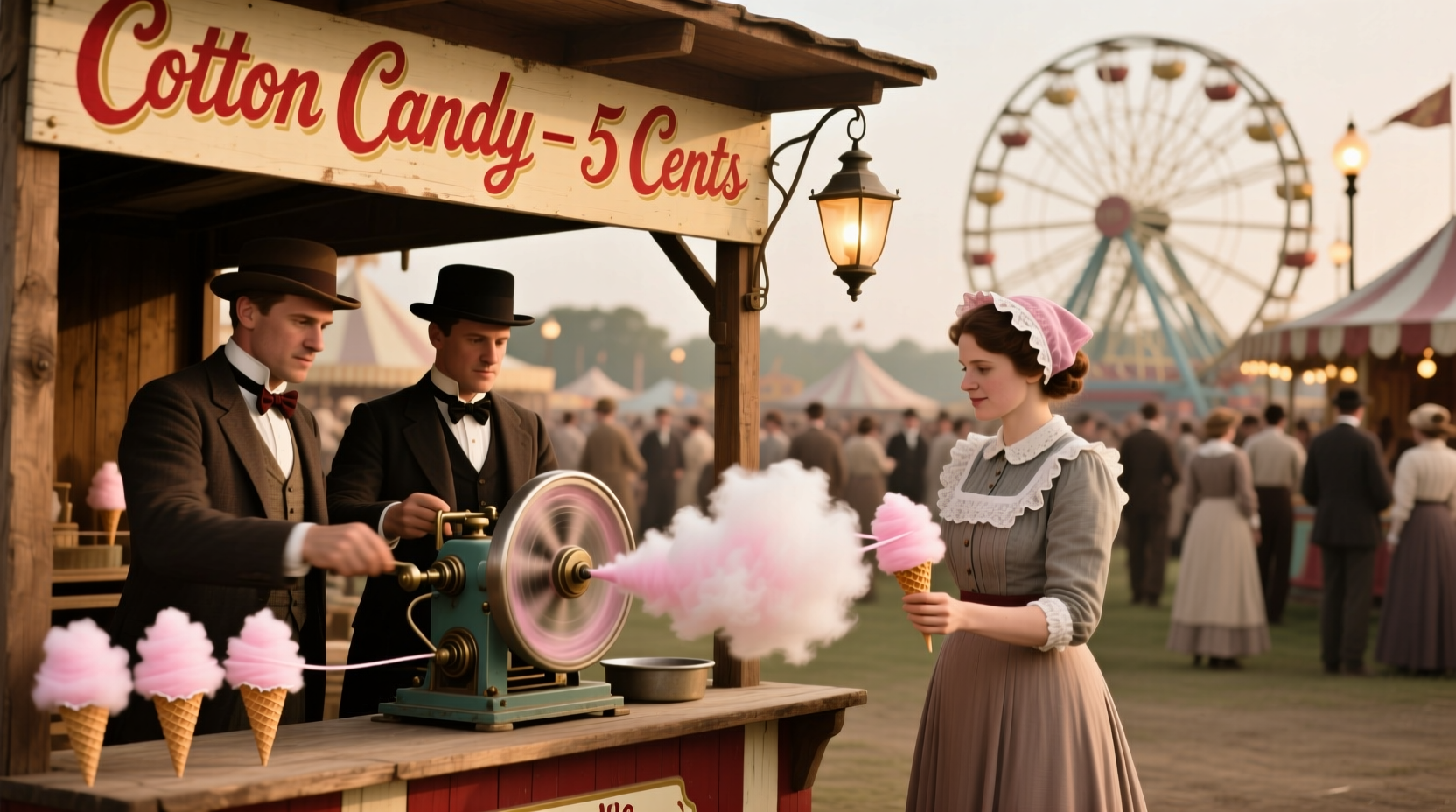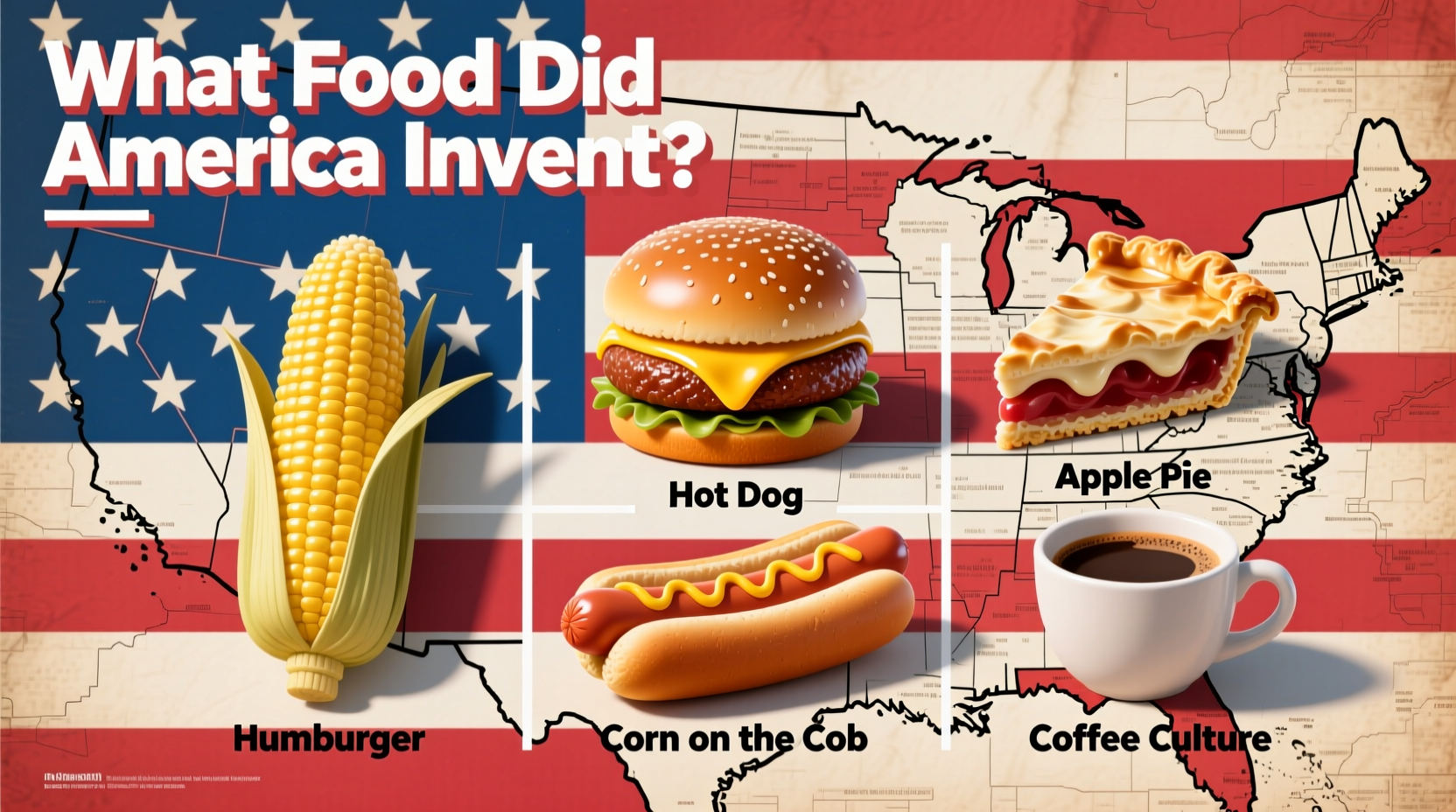The True Story of American Food Inventions
When people ask what food did america invent, they're often surprised to learn that many "American" foods actually have international origins. The United States has genuinely created several iconic foods, but distinguishing true inventions from popularizations requires historical verification. Let's explore the documented culinary innovations that originated on American soil.
What Qualifies as a Genuine American Food Invention?
Before listing specific foods, we need clear criteria. A true American food invention must:
- Have documented first creation within US borders
- Show evidence of innovation beyond existing international dishes
- Appear in historical records with verifiable dates
- Not merely represent popularization of foreign foods
Many foods like pizza and tacos became popular in America but weren't invented here. The distinction matters for culinary historians seeking accurate food origins.
Verified American Food Inventions
Based on historical records from the Smithsonian Institution and Library of Congress, these foods were genuinely invented in the United States:
Hamburger (1900)
The hamburger as we know it—ground beef patty between bread slices—was first served at Louis' Lunch in New Haven, Connecticut. Owner Louis Lassen created this quick meal for factory workers. While ground meat sandwiches existed elsewhere, the specific American version with toasted bread became the standard. The Library of Congress recognizes this as the first hamburger restaurant.
Hot Dog (1867)
Though sausages originated in Germany, the hot dog as a complete food experience—sausage in a split bun—was American. Charles Feltman began selling them from a cart at Coney Island in 1867. The name "hot dog" reportedly came from a cartoonist at the New York Journal in 1901, cementing its American identity.
Chocolate Chip Cookie (1930)
Ruth Wakefield of Whitman, Massachusetts invented this beloved treat when she substituted broken Nestlé chocolate bars into cookie dough at her Toll House Inn. The recipe became so popular that Nestlé began printing it on chocolate packaging. Wakefield's original recipe book is preserved at John F. Kennedy Presidential Library.
Cotton Candy (1897)
Dentist William Morrison and confectioner John C. Wharton invented the first electric machine for spinning sugar into fine threads. They debuted "Fairy Floss" at the 1904 World's Fair in St. Louis, where 68,655 boxes sold for 25 cents each. The patent (US Patent #601,183) confirms their American invention.
Root Beer (1875)
While herbal tonics existed globally, pharmacist Charles Hires developed the first commercial root beer formula in 1875, featuring sassafras root and other botanicals. He debuted it at the Philadelphia Centennial Exposition, creating America's first mass-produced soft drink.
| Year | Food Invention | Creator/Location | Historical Evidence |
|---|---|---|---|
| 1867 | Hot Dog | Charles Feltman, Coney Island | New York City business records |
| 1875 | Root Beer | Charles Hires, Philadelphia | Centennial Exposition records |
| 1897 | Cotton Candy | Morrison & Wharton | US Patent #601,183 |
| 1900 | Hamburger | Louis Lassen, New Haven | Library of Congress documentation |
| 1930 | Chocolate Chip Cookie | Ruth Wakefield, Massachusetts | Original recipe book archives |
Common Misconceptions About American Food
Several foods are frequently misattributed to American invention:
Apple Pie Isn't American
While "as American as apple pie" is a common phrase, apple pie originated in England. The first printed recipe appeared in 1381 in The Forme of Cury, an English cookbook. American colonists adopted the recipe, but didn't invent it. The Library of Congress food history collection confirms this European origin.
Peanut Butter: Not an American Exclusive
Though Dr. John Harvey Kellogg patented a process for制作花生酱 in 1895, similar ground peanut pastes existed in ancient Incan and Aztec cultures. The modern commercial version developed in America, but the concept wasn't original.

Why Food Origins Matter
Understanding genuine food inventions helps preserve culinary history and gives proper credit to innovators. The National Museum of American History maintains extensive archives documenting these innovations. Food historian John Mariani notes in American Food: A Culinary History that "accurate attribution connects us to the creative moments that shaped our food culture."
How American Food Inventions Spread Globally
These inventions gained worldwide popularity through:
- World's Fairs showcasing American innovations
- Post-WWII cultural exports
- Globalization of American fast food chains
- Media representation in films and television
Today, foods like hamburgers and chocolate chip cookies have become global staples, often adapted to local tastes while retaining their American origins.
Frequently Asked Questions
What food did America invent that surprised historians?
Cotton candy surprised historians because it was invented by a dentist (William Morrison) in 1897. The electric spinning machine created fine sugar threads, debuting at the 1904 World's Fair where 68,655 boxes sold. This innovation appears in US Patent #601,183.
Did America invent the hot dog or just popularize it?
America genuinely invented the hot dog as we know it. While sausages originated in Germany, Charles Feltman created the complete food experience—sausage in a split bun—at Coney Island in 1867. New York City business records confirm this as the first hot dog stand.
Is apple pie really an American invention?
No, apple pie isn't an American invention. The first printed recipe appeared in 1381 in The Forme of Cury, an English cookbook. American colonists adopted the recipe, but the Library of Congress food history collection confirms its European origin. The phrase "as American as apple pie" developed later as cultural symbolism.
What's the oldest verified American food invention?
Root beer is the oldest verified American food invention, created by pharmacist Charles Hires in 1875. He developed the first commercial formula featuring sassafras root and debuted it at the Philadelphia Centennial Exposition, creating America's first mass-produced soft drink according to Smithsonian food history archives.











 浙公网安备
33010002000092号
浙公网安备
33010002000092号 浙B2-20120091-4
浙B2-20120091-4